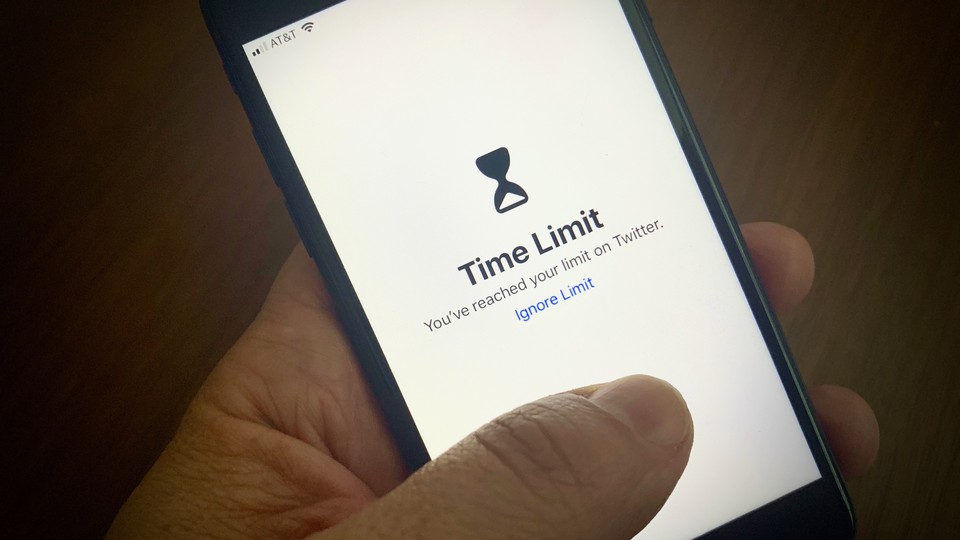Scrolling Safely: Common Questions and Answers About Responsible Screen Time

The Impact of Excessive Screen Time on Mental Health
Excessive screen time has become a prevalent issue in today’s digital age, with significant implications on mental health. The constant exposure to screens, whether it be through smartphones, computers, or television, has been linked to various psychological distress. Studies have shown a correlation between excessive screen time and symptoms of depression, anxiety, and stress among individuals of all ages.
One potential explanation for this connection is the displacement of other activities that promote mental well-being. Excessive screen time often leads to sedentary behavior, reduced physical activity, and social isolation. These factors can contribute to feelings of loneliness and a decrease in overall life satisfaction. Moreover, the blue light emitted by screens can disrupt sleep patterns, further exacerbating mental health issues.
It is important to recognize the impact of excessive screen time on mental health and take proactive measures to address this issue. Implementing screen time limits, engaging in regular physical activity, and fostering face-to-face social interactions can all contribute to improving mental well-being. Additionally, being mindful of screen use before bed and establishing healthy bedtime routines can help support better sleep quality.
Establishing Healthy Screen Time Boundaries for Children

Screen time has become an integral part of children’s lives, offering both educational and recreational opportunities. However, excessive screen time can have negative effects on their mental health and well-being. It is crucial for parents and caregivers to establish healthy screen time boundaries to ensure a balanced and healthy lifestyle for children.
Setting limits on screen time can help children develop a healthier relationship with technology. The American Academy of Pediatrics recommends that children aged 6 years and older should have consistent limits on screen time, such as no more than 2 hours of recreational screen time per day. For children younger than 18 months, screen time should be completely avoided, except for video chatting. The key is to find a balance that allows children to benefit from technology while also engaging in other activities such as physical play, reading, and social interactions. By setting clear boundaries, parents can help children develop good habits and avoid the negative impact that excessive screen time can have on their mental health.
Balancing Work and Personal Screen Time
In today’s digital age, finding a balance between work and personal screen time has become increasingly challenging. With the rise of remote work and the constant accessibility of technology, it can be tempting to blur the lines between professional and personal time. However, it is vital to establish boundaries to ensure our well-being and maintain a healthy work-life balance.
One way to achieve this balance is by implementing designated “tech-free” times or zones. For example, setting aside specific intervals during the day where you refrain from using electronic devices can help create a clear separation between work and personal life. This break from screens allows your mind to unwind and recharge, reducing the risk of burnout and improving overall mental well-being. Additionally, designating certain areas in your home as tech-free zones, such as the bedroom or dining area, can help establish a healthy boundary between work and personal life, promoting better relaxation and quality time with loved ones.
Another strategy for balancing work and personal screen time is practicing effective time management. Prioritizing and scheduling tasks can help minimize distractions and increase productivity. By allocating specific time blocks for work-related activities and personal activities, you can ensure that you have dedicated periods of focused work and leisure time. This approach not only helps maintain a sense of structure but also allows for a more intentional and efficient use of screen time.
Finding the right balance between work and personal screen time is crucial for our overall well-being. By implementing strategies such as designated tech-free times and effective time management, we can cultivate a healthier relationship with technology and create a harmonious balance between our professional and personal lives.
Tips for Reducing Eye Strain and Digital Fatigue
Excessive digital screen time has become a common part of our daily lives, whether it be for work or leisure activities. However, this increased reliance on screens can take a toll on our eyes and overall well-being. Eye strain and digital fatigue are among the most prevalent issues associated with excessive screen use. Thankfully, there are several tips that can help reduce these discomforts and promote healthier habits in our digital-dominated world.
Firstly, it is essential to practice the 20-20-20 rule, which involves taking breaks every 20 minutes to focus on an object 20 feet away for 20 seconds. This simple practice helps relax the eye muscles and minimize eye strain. Additionally, adjusting the screen brightness and contrast to comfortable levels can help reduce eye fatigue. Ensuring proper lighting in the environment, with neither excessive glare nor dimness, can also alleviate eye strain.
Moreover, optimizing the ergonomic setup of your workspace is crucial in minimizing digital fatigue. Position your screen at eye level and maintain a comfortable distance between your eyes and the screen. Consider using an adjustable stand or ergonomic chair to support good posture and reduce the strain on your neck and back. Furthermore, regular blinking and keeping your eyes well-lubricated with artificial tears can help combat dryness and discomfort caused by prolonged screen time.
Implementing these simple yet effective tips can significantly reduce eye strain and digital fatigue. By taking proactive measures to protect our eyes, we can ensure a healthier and more enjoyable digital experience.
Understanding the Connection between Screen Time and Sleep Quality
Screen time has become an integral part of our daily lives, with many individuals spending hours each day staring at screens. However, the consequences of excessive screen time on our physical and mental health cannot be ignored. One aspect that has attracted significant attention is the connection between screen time and sleep quality.
Numerous studies have highlighted the negative impact of screen time on sleep patterns. The blue light emitted by screens, such as smartphones, tablets, and laptops, can disrupt our circadian rhythm, making it harder to fall asleep and stay asleep. The short-wavelength blue light suppresses the production of melatonin, a hormone that regulates sleep-wake cycles. Consequently, individuals who engage in excessive screen time before bedtime often experience difficulty in initiating sleep and frequently wake up during the night.
Moreover, the content we engage with on screens, whether it be thrilling movies, stimulating video games, or engaging social media, can contribute to increased cognitive arousal, making it even more challenging to wind down and prepare for restful sleep. Additionally, the interactive nature of screens can lead to extended periods of use, further reducing the amount of time dedicated to sleep.
Considering the importance of quality sleep for overall health and well-being, it is crucial to be mindful of our screen time habits. Implementing strategies such as setting screen-free zones or establishing a digital curfew before bedtime can help improve sleep hygiene. By recognizing the connection between screen time and sleep quality, individuals can make informed choices that prioritize rest and rejuvenation, ultimately enhancing their overall health and daily functioning.
Nurturing Relationships in the Digital Age
In today’s digital age, relationships have taken on a new dynamic. Technology has undoubtedly made it easier to connect with others, but it has also brought about its own set of challenges. While we can now communicate with loved ones across the globe at the touch of a button, the quality of these interactions can sometimes be compromised.
One aspect of nurturing relationships in the digital age is finding a balance between virtual and face-to-face interactions. While technology allows us to stay connected with friends and family no matter the distance, it is important to remember the value of in-person connections. Research suggests that face-to-face interactions have a unique ability to foster trust, empathy, and emotional intimacy, which are essential for nurturing healthy relationships. So, while it may be convenient to rely solely on digital communication, it is important to make an effort to meet in person whenever possible.
Another way to nurture relationships in the digital age is by being mindful of our online behavior. It’s easy to get caught up in the fast-paced nature of social media and the need to constantly stay engaged. However, it is important to remember that the quality of our interactions matters more than the quantity. Taking the time to engage authentically, listen actively, and show genuine interest in others’ lives can go a long way in building and maintaining meaningful relationships. Additionally, setting boundaries for our online presence and choosing to disconnect from time to time can help us prioritize our relationships and foster deeper connections.
• Finding a balance between virtual and face-to-face interactions
• Research suggests that face-to-face interactions foster trust, empathy, and emotional intimacy
• Making an effort to meet in person whenever possible
• Being mindful of our online behavior
• Quality of interactions matters more than quantity
• Engaging authentically, listening actively, and showing genuine interest in others’ lives
• Setting boundaries for our online presence
• Choosing to disconnect from time to time
Managing Social Media Anxiety and FOMO (Fear of Missing Out)
Social media has become an integral part of our daily lives, providing us with an unprecedented level of connection and information. However, it’s important to recognize that excessive use of social media can lead to anxiety and a constant fear of missing out, commonly known as FOMO. Many individuals find themselves constantly comparing their lives to others, feeling inadequate and overwhelmed with the constant stream of updates and curated highlight reels.
One way to manage social media anxiety and FOMO is by creating boundaries and limiting your time spent on these platforms. Set specific time limits for social media use each day and stick to them. This will help you regain control over your digital habits and reduce the time spent comparing yourself to others. Additionally, consider taking breaks from social media altogether. Engage in activities that bring you joy and fulfillment, whether it’s spending time with loved ones, pursuing hobbies, or simply enjoying some quiet time alone. By redirecting your focus away from social media, you can alleviate anxiety and cultivate a healthier mindset.
Recognizing the Signs of Screen Addiction and Seeking Help
Screen addiction is a growing concern in today’s digital age. Many individuals, especially young adults and adolescents, find themselves spending excessive amounts of time glued to their screens, whether it be smartphones, computers, or televisions. This excessive engagement with screens can have detrimental effects on one’s mental health and overall well-being. It is crucial to recognize the signs of screen addiction in order to seek the necessary help and support.
One of the telltale signs of screen addiction is the inability to control or limit screen time. Individuals who are addicted to screens often find themselves spending more and more time engaged in screen-related activities, neglecting other important aspects of their lives such as work, education, and relationships. They may feel a strong compulsion to constantly check their devices, even when it interferes with their daily functioning.
Another sign of screen addiction is the withdrawal symptoms experienced when not using screens. Just like with any other addiction, individuals who are addicted to screens may exhibit signs of restlessness, irritability, anxiety, and even depression when they try to reduce or eliminate their screen time. The dependency on screens can be so strong that it becomes challenging for individuals to engage in offline activities or social interactions without experiencing significant distress.
Recognizing these signs in oneself or in someone you know is the first step towards seeking help. Screen addiction can have serious consequences on mental health and overall well-being, but with the right support and interventions, individuals can regain control over their digital habits and lead a healthier, more balanced life. Seeking professional help from therapists or participating in support groups specifically designed for screen addiction can provide the necessary guidance and tools to overcome this addiction and establish healthier screen time boundaries. It is important to remember that reaching out for help is a sign of strength, and with determination, individuals can break free from the grips of screen addiction.
Exploring Productivity Tools and Techniques for Limiting Distractions
In today’s digital age, it’s becoming increasingly challenging to stay focused and productive amidst the constant barrage of distractions. Whether it’s the allure of social media, email notifications, or the temptation to constantly check our phones, our ability to concentrate on important tasks is often compromised. This is where productivity tools and techniques come in handy, offering a range of strategies to help limit these distractions and maximize our efficiency.
One popular tool for increasing productivity is time-blocking. This technique involves allocating specific time intervals to focus on specific tasks, without any interruptions. By setting aside dedicated blocks of time for important activities, such as writing emails or working on a project, individuals can minimize the chances of being distracted by other less urgent matters. Time-blocking can be done manually using a physical planner or by utilizing various digital apps and software that offer customizable scheduling features. In doing so, individuals can prioritize their most important tasks, ensure they have the necessary time to complete them, and minimize the risk of getting sidetracked by unrelated activities.
Promoting Physical Activity and Exercise in a Screen-dominated World
Regular physical activity is essential for maintaining good overall health and well-being. However, in today’s screen-dominated world, it can be challenging to prioritize exercise and move away from sedentary behavior. The constant lure of screens, be it smartphones, tablets, or computers, has made people more prone to a sedentary lifestyle, which can have detrimental effects on physical and mental health.
Engaging in regular physical activity not only helps to improve cardiovascular health, but it also aids in weight management, strengthens muscles and bones, and reduces the risk of various chronic diseases. Exercise also plays a crucial role in uplifting mood, reducing stress, and improving cognitive function. With the abundance of information and entertainment available at our fingertips, it is important to find ways to incorporate physical activity into our daily routines and strike a balance between screen time and exercise. By making conscious choices and establishing healthy habits, we can promote physical activity and exercise in a screen-dominated world, ultimately enhancing our overall well-being.
Cultivating Mindfulness and Self-awareness in the Digital Era
In the digital era, where screens and technology dominate our lives, cultivating mindfulness and self-awareness has become more important than ever. With countless distractions and constant connectivity, it is easy to lose touch with our own thoughts and emotions. However, by incorporating simple techniques into our daily routines, we can regain control and enhance our overall well-being.
One of the key practices for cultivating mindfulness in the digital era is to disconnect from our devices and create space for reflection. This can be as simple as setting aside a few minutes each day to be fully present and aware of our surroundings. Taking a mindful walk in nature or practicing deep breathing exercises can help calm the mind and center our focus. By consciously detaching from the digital world, we create an opportunity to reconnect with ourselves and develop a deeper sense of self-awareness.
Additionally, practicing mindfulness in our digital interactions is essential for maintaining a healthy relationship with technology. Often, we may find ourselves mindlessly scrolling through social media or constantly checking emails without even realizing it. By bringing conscious awareness to our online activities, we can become more intentional with our screen time. Setting specific boundaries, such as designated phone-free hours or limiting social media usage, can help us strike a balance and promote self-awareness in our digital habits. Ultimately, cultivating mindfulness and self-awareness in the digital era allows us to navigate technology responsibly, keeping our mental well-being at the forefront.
How does excessive screen time affect mental health?
Excessive screen time can negatively impact mental health by contributing to feelings of anxiety, depression, and social isolation.
How can I establish healthy screen time boundaries for my children?
Set clear limits on the amount of time your children can spend on screens each day and encourage alternative activities such as outdoor play or reading.
How can I balance my personal screen time with other activities?
Allocate specific times for screen use and make an effort to engage in activities that do not involve screens, such as hobbies, exercise, or spending time with loved ones.
What can I do to reduce eye strain and digital fatigue?
Take regular breaks from screens, adjust screen brightness and contrast, use proper lighting, and practice the 20-20-20 rule (look away from the screen every 20 minutes, focusing on an object 20 feet away for 20 seconds).
Is there a connection between screen time and sleep quality?
Yes, excessive screen time, especially before bed, can disrupt sleep patterns and lead to poor sleep quality. It is recommended to limit screen use at least an hour before bedtime.
How can I nurture relationships in the digital age?
Prioritize face-to-face interactions, have meaningful conversations, and set aside dedicated time to connect with loved ones without any distractions from screens.
What can I do to manage social media anxiety and FOMO?
Limit your social media usage, unfollow accounts that make you feel anxious or inadequate, focus on real-life experiences, and practice self-compassion.
What are the signs of screen addiction and how can I seek help?
Signs of screen addiction may include neglecting responsibilities, withdrawal symptoms when not using screens, and unsuccessful attempts to cut back. If you suspect addiction, seek support from a mental health professional.
Are there any productivity tools or techniques to limit distractions?
Yes, there are various productivity apps, browser extensions, and techniques like the Pomodoro Technique that can help manage distractions and improve focus and productivity.
How can I promote physical activity and exercise in a screen-dominated world?
Make a conscious effort to incorporate physical activity into your routine, set fitness goals, join exercise classes, or engage in outdoor activities that encourage movement and reduce screen time.
How can I cultivate mindfulness and self-awareness in the digital era?
Practice mindfulness exercises such as meditation or deep breathing, set intentional goals for screen use, regularly reflect on your digital habits, and prioritize self-care activities that promote self-awareness.







One Comment